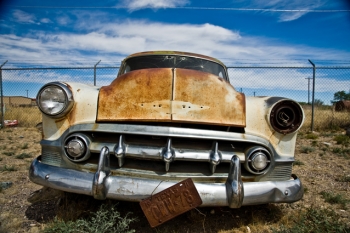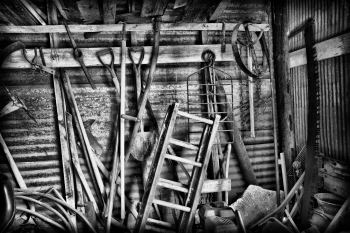Not too long ago my fiancee and I were spending a little quality time with her nieces. Just a few months away from turning four, the older of the two is in the midst of the “why” stage–constantly calling into question everything from the most mundane points of existence to the perpetually mystifying.
The intense cross examination was inspiring in a way, it caused me to think about a lot of things that I’ve come to casually accept over the years, namely art and design and why I obsess about it. In my day to day existence I continually urge people to engage in art: make it, buy it, appreciate it. But why?
Art is often looked at as an accessory to life, or worse, an extravagance. But seen within the context of a few years (maybe a few hundred years), it’s clear that art has almost always been a considerable part of the average person’s life. So the lesson to learn may be that by buying art and engaging in creativity, we’re actually reconnecting with a valuable tradition as opposed to doing anything extraordinary.
Take for instance, architecture. Ever looked at a classic Victorian home? The details are swoon-inducing and considering the technological limitations of the day, each home was a monumental undertaking. Whether for love, status or sheer aesthetic inclination, the inhabitants of these homes brought art into their lives and their neighborhoods.
Jump forward a century and you have the golden age of automobile design. Chrome and angles everywhere! Just stepping into a dealership required the average consumer to make serious decisions about what they liked and how it might fit in their garage.
And forget about the sedans–those are a no brainer–the ultimate indication of older generations’ commitment to the auto-as-art lies in the pickup trucks of the day. Beautiful!
The disconnect here may lie in the fact that art as we know it is quite narrowly defined. It hangs on walls and stands on pedestals and is a fairly overt means of self-expression. The difference is that in the past when people played a greater role in the creation of the minor things that make up a life; clothes, tools, household goods, etc., they put a little bit of themselves into everything they made. My grandfather was a Jack-of-all-trades, a fix-it man and a craftsman of the highest order. If you needed it, he could make it–toys, furniture, boats, lawnmowers–there was no end to his creativity. The thing about it is that he didn’t just make stuff, he also made all of his tools to make stuff with. My eldest brother, a carpenter and cabinet maker, has “Pa’s” quiver of chisels, saws, screwdrivers, clamps, hammers and hand drills. Each one bears the marks of use, my grandfather’s grip worn into handles that were made with a single user in mind, burnished with love and elbow grease.
This may be the oversimplification of a retro-obsessed apologist, but as time goes on and we move from handmade to mechanized to computerized, it is important to pay attention to what falls by the wayside. There is always something to be said for function and efficiency; it’s the stuff of progress and evolution. Indulging or remembering the inclination toward creativity for fun and beauty’s sake shouldn’t be regarded as an indulgence in any regard though, it’s a part of our shared past and tradition to hold dear.






Comments (0)